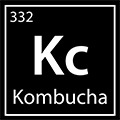Probiotic Powerhouse for Fermented Goodness

In the world of fermented foods, kefir grains hold a special place as the unsung heroes behind the scenes. These unique clusters of beneficial bacteria and yeast have been used for centuries to create a tangy and sometimes creamy probiotic beverage known as kefir. In this article, we will explore the wonders of kefir grains, their fascinating history, and how they can empower you to make your own delicious and nutritious kefir at home.
Unveiling the Mystery of Kefir Grains
Kefir grains are not your typical grains but rather small, gelatinous colonies of bacteria and yeast that resemble cauliflower florets. Contrary to their name, they contain no actual grain or gluten. These grains are living cultures that ferment milk, water and coconut water, transforming it into a tangy and effervescent probiotic drink.
Ancient Origins and Cultural Significance
The origins of kefir grains trace back thousands of years to the Caucasus Mountains, where they were traditionally cherished as a symbol of health and longevity. The local populations considered kefir grains a precious heirloom, passing them down through generations. Today, kefir is enjoyed worldwide for its health benefits and unique flavour.
The Probiotic Powerhouse
Kefir grains are a probiotic powerhouse, packed with a diverse array of beneficial bacteria and yeast. When added to milk, these microorganisms begin a fermentation process that breaks down lactose, making kefir a suitable option for lactose-intolerant individuals. Similar water kefir grains can be added to sugar water or coconut water fermenting the sugars to create beneficial gut bacteria, enzymes and B vitamins. The resulting beverage is abundant in probiotics, which promote a healthy gut microbiome, aid digestion, enhance nutrient absorption, and support immune function.
Simple and Sustainable Home Cultivation
One of the remarkable aspects of kefir grains is their ability to perpetuate and grow with each batch. With proper care, your initial small portion of kefir grains can multiply, allowing you to share them with friends or experiment with different flavours. Cultivating kefir grains at home is a rewarding and sustainable practice that offers a continuous supply of this beneficial probiotic drink.
Versatility and Culinary Adventures
While kefir is commonly made with cow's milk, kefir grains can also ferment other types of milk (such as goat, sheep, or plant-based alternatives) and even non-dairy liquids like coconut water. This versatility opens up a world of culinary possibilities, allowing you to experiment with various flavours and textures while reaping the benefits of probiotics.
Making Kefir at Home
Crafting your own kefir at home is a straightforward process. Ensure you purchase the correct grains for either milk or water, then simply combine kefir grains with milk or water in a clean glass jar, cover it, and allow it to ferment at room temperature for 24-48 hours. The longer the fermentation time, the tangier and more effervescent the kefir becomes. Once fermented, strain the kefir grains, which can be reused for subsequent batches, and refrigerate the kefir for a refreshing beverage ready to be enjoyed.
Kefir grains are nature's gift to homemade fermented goodness. These living cultures offer a simple and sustainable way to create a delicious and probiotic-rich kefir beverage right in your own kitchen. From their ancient origins to their versatile culinary potential, kefir grains invite you on a journey of exploration and health empowerment. So why not embrace the magic of kefir grains and unlock the probiotic power of this remarkable drink for your well-being?





